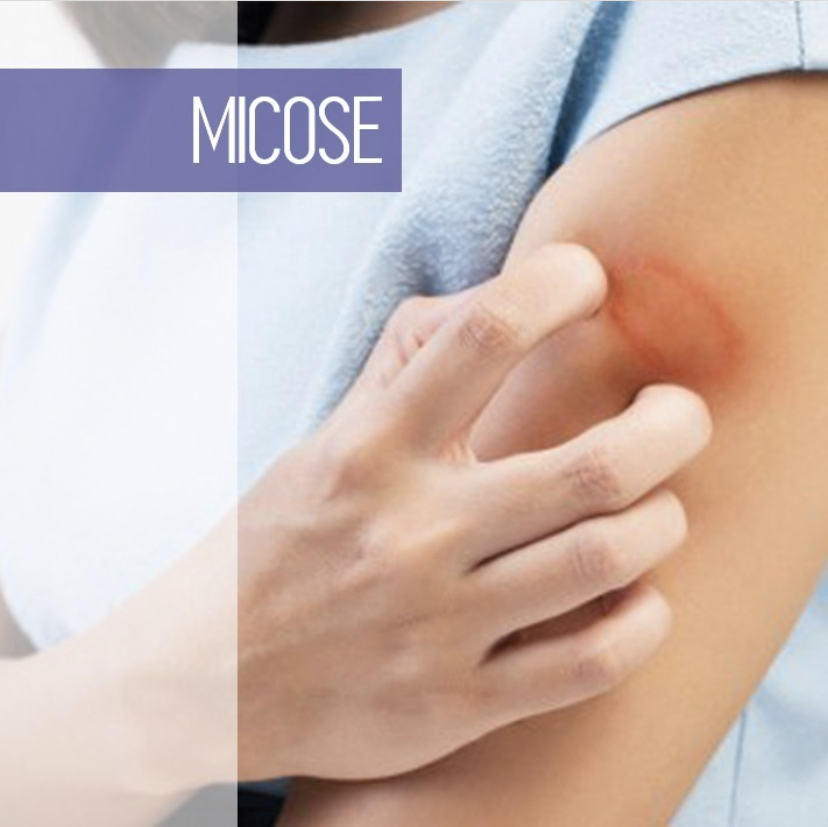Good morning readers, 
Today let’s talk about how the Oriental Medicine can help heal mycosis.
Mycosis is a disease caused by fungus that may affect skin, nails, scalp, crotch and genital region, as a result leading to the manifestation of diverse symptoms, such as: itchiness, redness, dark or light spots on skin, scaling injuries, deformity of nails, and when it happens around genital area, there may be vaginal discharges in women and pruritus in men.
Fungus proliferate very easily in warm and humid environments, thus why there are more mycosis cases in Summer. People that have a lot of sweating in their feet, stay for long periods of time wearing closed shoes, or that stay with wet clothes (like bathsuits) for a long time, use very tight clothes or share from humid places, such as pools, showers, are more prone to suffer from this problem.
Ocidental Medicine will treat mycosis with antifungal meds, and many times that won’t be 100% effective.
Chinese Medicine sees mycosis as an Extreme Heat and Humidity Syndrome, therefore, there isn’t involvement of internal organs or any damage on them.
Therefore, we should fight off Mycosis using techniques that remove these pathogenic factors. In order to do so, we use moxibustion, removing then the humidity and transmuting the heat. That is, raising heat to its maximum, healing humid injuries, increasing nourishment and tissue oxygenation, promoting reconstruction on the affected tissue.
That are 3 moxibustion techniques that may be used to treat mycosis:
- Incense/ Cigaret Moxibustion: it’s a little incense made of compact artemisia that creates a softer heat than the traditional moxibustion stick. In order to treat mycosis, the therapist must take the incense and draw it near, approximately 0.5cm from the injure, then the therapist shall wait until the patient complains “it’s hot” and from this point approach and move away the incense from 5 to 7 times, from the place that needs to be healed. If the patient complains, during repetitions, that the heat is too strong, the process shall be ceased and moved to another spot or end the moxibustion sequence. The same process may be done in sweeping instead of point to point from injure. The choice depends on the affected skin/nails extension. This kind of Moxibustion is a good option for more sensitive spots, like genital region. The procedure may be done up to 2x a week, with 48 hours intervals in-between sessions.
- Moxibustion Stick: The moxibustion stick is made in the same way as the incense/cigaret moxibustion, however the heat it produces is considerably higher and for this reason the therapist must sharp his attention, not to cause any burns on the patient’s skin. The better the herb used the better will the result be. Unlike the incense moxibustion, the moxibustion stick is made of artemisia wool, which has different qualities. Green wool, the most common, is less pure. The golden wool is more expensive, better purity, therefore a better heating and analgesic capacity, when compared to the first one. The stick is recommended for less sensible regions, such as the member’s skin/back or even nails. May be done up to 2x a week, with 48 breaks in-between sessions, and given that it’s famous for generating a lot of smoke, the therapist must do the procedure in an open ventilated place, or use an exhaust fan in order to make the environment more salutary.
- Direct Moxibustion: On this technique, the therapist buys only moxibustion wool and with little amounts of it, he will make small cones, these will be fixated on the patient’s skin and stricken with a drop of water. After the cone is fixated on the skin/nail of the patient, the therapist must light it up using an incense (never use a lighter directly on the cone, since it may result in burns to the patient skin) after lit up, the cone must be removed from the spot when it has reached around 80% of it’s burning capacity. The cones should have a maximum height of 3mm. Direct moxibustion produces less smoke than stick moxibustion, that’s why it’s better suited for closed environments.
To remove it, we may use a pincer or the fingers, like tweezers. The therapist must have by his side a glass of water, for the cone when removed, still burning, may be discarded without any risks, like burning or fire in the point of care.
In the case of direct moxibustion, there will be used over the injure spot, from 3 to 5 cones, and the procedure should be done once a week. It’s the best technique to recover nails that are deformed due to mycosis and such injuries are recovered within 1 to 3 months of treatment.
** It’s important to warn the patient that the nails will turn yellowish during the treatment process and shall return to their normal color as they grow.
Moxibustion treatment must be done only by qualified professionals, in special direct moxibustion, since there is a risk of burning himself and the patient, and thus leaving permanent scars on the skin.
In general, there aren’t any contraindications in moxibustion technique for mycosis, and the results are always satisfactory.
Do you have a patient with mycosis? Then test the treatment and tell me how it went!
Hope this was useful!
My warmest regards!
Profa. Fernanda Mara